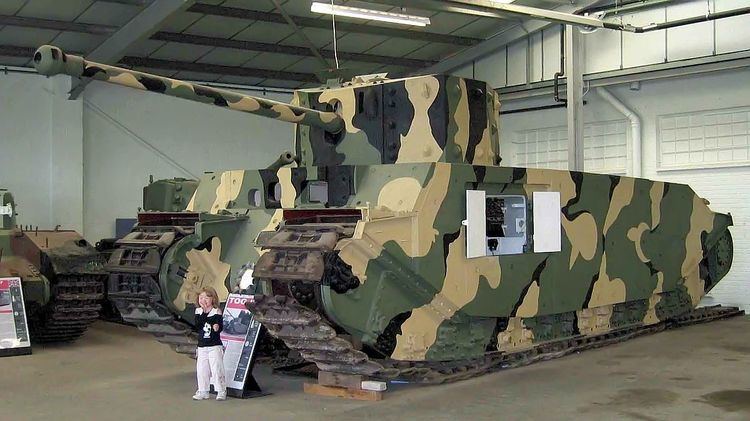 | ||
Super-heavy tank, also super heavy tank, is a semi-official term for any armoured fighting vehicle in the class beyond heavy tanks. As such, they can most easily be distinguished from lesser vehicles by their very large size and mass. Weight-classes are only meaningful when comparing contemporary vehicles.
Contents
History
Programs have been initiated on several occasions with the aim of creating an indestructible vehicle for penetrating enemy formations without fear of being destroyed in combat; however, only a few examples have ever been built, and there is little evidence of any super heavy tank having seen combat. Examples were designed in World War I and World War II, along with a few in the Cold War.
World War I period
The first super-heavy tank was designed by the Russian naval engineer Vasily Mendeleyev who worked on the project from 1911 to 1915. The tank was envisioned to be invulnerable to almost all contemporary threats but remained on paper because of its high construction cost. Following the production of their first tanks, the British "Flying Elephant" was designed as a tank that would be resistant to artillery fire. Since mobility was more important than protection, and the tanks already developed were successful, work on the project was stopped. The German K-Wagen (Großkampfwagen) was a very heavy design carrying 4 guns and needing a crew of 27. Two of them were under construction when the war ended and both were demolished.
World War II period
During World War II all of the major combatants introduced prototypes for special roles. Adolf Hitler was a proponent of "war winning" weapons and supported projects like the 188 tonne Maus, and even larger 1,000 tonne Landkreuzer P. 1000 Ratte and 1,500 ton Landkreuzer P. 1500 Monster. The British and Soviets all built prototype designs similar to the Jagdtiger, and the US was working on the then known T95 Gun Carriage, which was later changed to T28 Super Heavy Tank. However, most of these designs never passed the prototype stage, and only some have ever been in existence.
Cold War period
The idea of very heavy tanks saw less development after the war, not least since tactical nuclear weapons would always be more powerful than any feasible armour could protect against. The advances in armour technology allowed large tanks to stay in the approximate up to 65 ton range. Examples include Object 279 (Soviet Union) and T29 Heavy Tank (United States).
Post Cold war
Further advances in armour technology have given the armour of late 20th century tanks the estimated equivalent of over a meter of rolled homogeneous armour (the type of armour used before, now used for comparison between different armour designs). At the same time the weapon development allows for any equal adversary to destroy any target detected and tracked by the wide array of different sensors available. This means adding more armour would not increase protection to any significant degree, and thus current development is instead focused on a combination of remaining undetected, interfering with tracking and active counter-measures to neutralize the enemy weapon systems.
